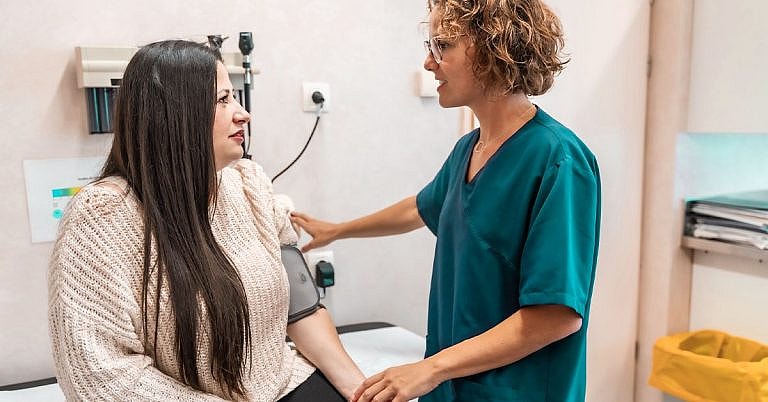What are Cataracts?
[trp_language language=”en_US”]
A cataract is a clouding of the eye’s lens which leads to a decrease in vision and, in some cases, possible blindness. The condition occurs when protein clumps in one or both eyes prevent the retina from receiving clear images.[1] Cataracts generally affect older people, but can also be present from birth, be brought about by exposure to radiation or trauma, as well as through complications from surgery.[2]
Cataracts are among the main causes of blindness globally and are one of the most common reasons for loss of vision in people over 40.[3] Cataracts can be treated through surgery, and steps can be taken to help prevent the onset of the disorder.
Types of cataracts
There are several types of cataracts, each classified by how and where they develop in the eye:[4]
- Nuclear cataracts form in the center (nucleus) of the lens and typically cause the eye to become brown or yellow. They are normally associated with aging.
- Posterior capsular cataracts affect the back of the eye and typically form very quickly.
- Cortical cataracts form in the lens cortex which surrounds the nucleus. They are white and wedge-shaped opacities.
- Congenital cataracts are a rare form that develops in childhood or are present at birth.
- Radiation cataracts are brought about by exposure to radiation, typically as a result of cancer treatment.
- Traumatic cataracts are brought about by damage to the eyes and can sometimes develop some time after the initial trauma.
- Secondary cataracts are a result of medications or disease. These include the steroid prednisone, diabetes, and glaucoma.
Symptoms of cataracts
Cataracts typically develop slowly, meaning the symptoms may be difficult to detect or confused with normal signs of aging. The symptoms include:
- Blurred, clouded or dimmed vision
- Sensitivity to light and glare, particularly at night
- Objects appear yellow-tinged or faded in color
- Halos appearing around lights
- Changes in glasses prescription
Occasionally, when cataracts first develop, it can lead to an improvement in nearsightedness. This phenomenon is known as “second sight” and is a temporary occurrence that will disappear as the condition develops.[5]
Worried you may have this condition?, check your conditions Adoctor conditions.
Causes of cataracts
The lens of the eye filters light onto the retina, allowing for clear and focussed vision. Largely, it is made from water and proteins. Cataracts are brought about when these proteins begin to clump in the lens, leading to blurred, faded, and cloudy vision that can worsen over time. This clumping is commonly a result of aging, yet it is not clear why some people and not others are affected.
There are, however, some factors that may increase an individual’s chances of developing cataracts, including:[6]
- Exposure to ultraviolet radiation, from sunlight or radiation therapy
- Diabetes
- Eye conditions such as uveitis and glaucoma
- Eye injury or surgery
- Use of corticosteroids
- A family history of cataracts
Other factors that are also thought to be linked to the development of cataracts include:
- Smoking
- Alcohol
- The abuse of illicit substances
- Vitamin deficiency. This includes vitamin D deficiency, vitamin K deficiency and vitamin B12 deficiency.
Diagnosing cataracts
Cataracts are diagnosed through a full eye examination carried out by an optometrist or ophthalmologist. Those experiencing problems with their sight should visit an eye care professional as soon as possible. Moreover, people over 40 should undergo an eye test at least once every two years.[7]
Cataracts treatment
If the symptoms of cataracts are mild, an altered prescription, e.g., for different glasses or contact lenses, may be effective in correcting an individual’s vision. However, it is typical for cataracts to worsen over time. If this happens, it is likely that surgery will be necessary.[8]
Cataracts surgery is a common procedure and is usually carried out under local anesthetic. Most people who undergo cataract surgery will see a significant improvement in their vision, with 9 out of 10 people achieving between 20/20 and 20/40 vision afterward. However, most surgeons will focus on correcting long-distance sight, meaning glasses may still be needed to see things close at hand.
Good to know: The terms 20/20 and 20/40 are visual acuity measurements.
This is usually measured using the Snellen visual acuity system:
- The top number of the fraction refers to the viewing distance between the patient and the eye chart.
- The bottom number of the fraction refers to the distance at which a person with ideal vision would be able to see the figures on the eye chart clearly.
A person with 20/40 vision can therefore see figures on the eye chart clearly at a distance of 20 feet, whereas a person with ideal vision could see the same figures clearly, from a distance of 40 feet away from the eye chart.
In the United States, the distance at which visual acuity is measured is typically 20 feet. In other countries, this distance is generally six meters, and a person’s visual acuity may therefore be expressed as a fraction of six.
Risks
The risk of complications during and after cataract surgery is small. The most common complication is posterior capsule opacification (PCO) brought about when skin or membrane grows over the implanted lens, resulting in a return of clouded or impaired vision. PCO can be corrected with laser surgery.[1][8]
There are other risks that are far less common. Risks during the operation include:
- Tearing of the lens
- Inability to remove the cataracts
- Bleeding of the eye
- Accidental damage to other areas of the eye
Risks following the operation include:
- Inflammation of the eye
- Retina swelling
- Cornea swelling
- Retinal detachment
- Infection
If complications become apparent after surgery, a doctor should be contacted as soon as possible. In most cases, complications can be rectified with treatment or further surgery.
Cataracts prevention
Although there is no guaranteed way to prevent cataracts, there are some preventative measures that can be undertaken to reduce the risk. They include:[9]
- Having your eyes checked regularly
- Eating a healthy diet rich in vitamins
- Quitting or cutting down on smoking
- Reducing your alcohol intake
- Avoiding prolonged use of corticosteroids
Cataracts FAQs
Is cataract extraction possible?
Do cataracts lead to blindness?
-
Patient. “Cataracts.” November 20, 2015. Accessed September 11, 2017. ↩ ↩
-
National Eye Institute. “Facts about cataracts.” September 2015. Accessed: 31 May, 2018. ↩
-
All About Vision. “Cataracts.” April 25, 2017. Accessed July 12, 2017. ↩
-
Healthline. “Cataract: Types of Catacacts.” February 12, 2016. Accessed July 12, 2017. ↩
-
Eye Bulletin. “What is Second Sight and How Does it Happen?” December 24, 2014. Accessed July 12, 2017. ↩
-
NHS. “Age-related cataracts.” December 8, 2016. Accessed November 19, 2017. ↩
-
VisionAware. “How is a Cataract Diagnosed?” Accessed July 12, 2017. ↩
-
NHS. “Cataract surgery.” December 14, 2017. Accessed November 19, 2017. ↩ ↩
-
Vision Source. “Is There Any Way to Prevent Cataracts?” June 25, 2014. Accessed July 12, 2017. ↩
-
Medline Plus. “Cataract removal.” November 8, 2015. Accessed July 12, 2017. ↩
[/trp_language]
[trp_language language=”ar”][wp_show_posts id=””][/trp_language]
[trp_language language=”fr_FR”][wp_show_posts id=””][/trp_language]
**What are Cataracts? A Comprehensive Guide**
**Introduction**
Cataracts are a prevalent eye condition that affects millions of people worldwide, especially as they age. Understanding cataracts and their symptoms is crucial for maintaining eye health and comprehensive wellness. This article provides a comprehensive question-and-answer guide to help you understand cataracts, their causes, symptoms, treatments, and prevention strategies.
**Q: What are Cataracts?**
A: Cataracts are clouding of the eye’s natural lens, which blocks the passage of light. Typically, the lens is clear and allows light to reach the retina, resulting in clear vision. However, over time, proteins within the lens can clump together, forming a cataract, which distorts or blocks light and impairs vision.
**Q: What Causes Cataracts?**
A: Cataracts can result from several factors, including:
* **Aging:** The most common cause of cataracts is the natural aging process.
* **UVA and UVB Radiation:** Prolonged exposure to ultraviolet (UV) radiation from the sun can damage the lens and contribute to cataract formation.
* **Other Medical Conditions:** Certain medical conditions, such as diabetes, high blood pressure, and certain medications (e.g., steroids), can increase the risk of cataracts.
* **Trauma or Injury:** Eye injuries or trauma can sometimes damage the lens and lead to cataracts.
**Q: What are the Symptoms of Cataracts?**
A: Cataract symptoms may include:
* **Blurred or clouded vision:** Cataracts can gradually cause blurred or hazy vision, making it difficult to see clearly.
* **Fading Colors:** Cataracts can make colors appear faded or yellowed, affecting color perception.
* **Double or Multiple Vision:** Cataracts can sometimes cause double or multiple vision in the affected eye.
* **Sensitivity to Light:** Cataracts may increase sensitivity to bright lights, causing glare or halos around light sources.
* **Diminished Night Vision:** As cataracts worsen, night vision and low-light vision can become significantly impaired.
**Q: How are Cataracts Treated?**
A: Cataract treatment typically involves surgery to remove the clouded lens and replace it with an artificial intraocular lens (IOL). The procedure is usually performed on an outpatient basis and has a high success rate.
**Q: Can Cataracts be Prevented?**
A: While cataracts are often part of the natural aging process, there are certain steps you can take to reduce the risk:
* **Protect Your Eyes from UV Radiation:** Wear sunglasses that block 100% of UV rays.
* **Manage Blood Sugar Levels:** If you have diabetes, managing blood sugar levels diligently can reduce the risk of cataracts.
* **Quit Smoking:** Smoking has been linked to an increased risk of cataracts.
* **Eat a Healthy Diet:** A diet rich in antioxidants (e.g., fruits, vegetables) may offer some protection against cataracts.
* **Regular Eye Exams:** Regular eye exams are crucial for early detection and monitoring of cataracts.
**Conclusion**
Cataracts are a common eye condition that can significantly impact vision. Understanding cataracts, their symptoms, and treatment options is essential for maintaining eye health and ensuring optimal vision throughout life. By adhering to preventive measures and seeking timely medical care, individuals can minimize the risk or manage the effects of cataracts, preserving clear and vibrant vision for years to come.








Cataracts are better known to ophthalmologists as opacity of the lens. They are opacities or clouding’s that develop in the normally clear lens of the eye, usually with the aging process. As we age, the proteins in the lens become denatured (i.e., they unravel). When enough proteins are denatured, light can no longer pass through the lens. As a result, the lens becomes cloudy, and this is known as a cataract.
ump45:
A cataract is a cloudiness that forms in the lens of the eye.
A cataract is a clouding of the lens in the eye that can cause blurred vision.